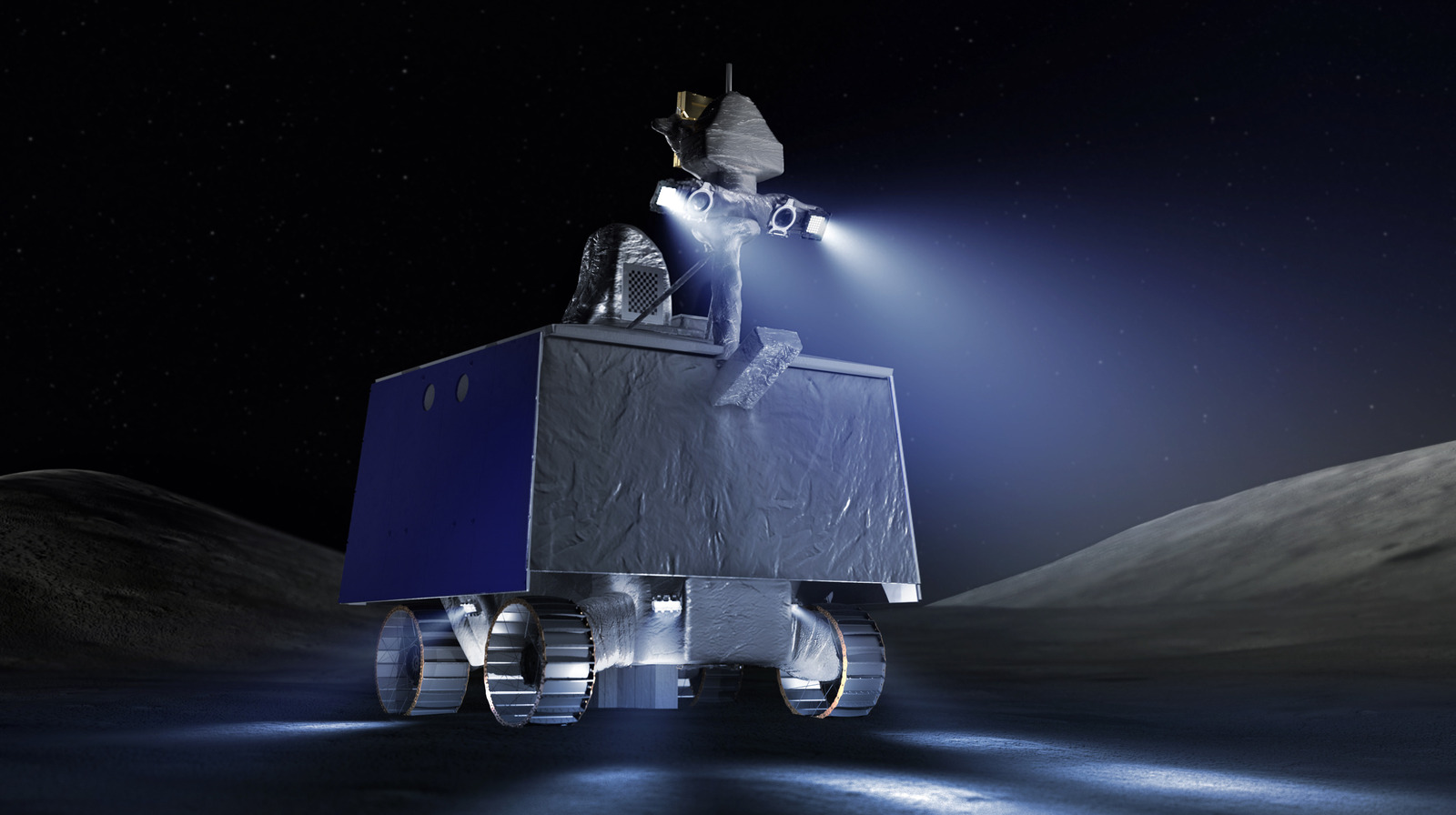Everything We Know About VIPER, NASA’s Water-Hunting Lunar Rover

To help it in its task of locating ice deposits, VIPER will have four instruments. Firstly there is a hammer drill for boring down into the moon’s surface to look for ice there called the Regolith and Ice Drill for Exploring New Terrains (TRIDENT). Then there are three spectrometer instruments that can analyze the composition of samples by looking at the light they emit called the Mass Spectrometer Observing Lunar Operations (MSolo) instrument, the Near Infrared Volatiles Spectrometer System (NIRVSS), and the Neutron Spectrometer System (NSS).
The TRIDENT drill will be around 3.2-feet long, allowing the rover to reach deep beneath the moon’s surface, and it is a special type of drill called a rotary percussive. Unlike the typical drill you’d have at home that only spins, this one both spins and hammers so it can get through tough material like hard rocks. Two of the three spectrometers can detect hydrogen molecules and determine what type of molecules these are (such as whether they are lone hydrogen atoms, water, or a different molecule called hydroxyl). And the third works to determine what gases are coming from the lander rather than the moon itself to prevent a false reading.
These instruments will allow the rover to get a whole new view of the moon. “VIPER will be the most capable robot NASA has ever sent to the lunar surface and allow us to explore parts of the Moon we’ve never seen,” said NASA program scientist for VIPER, Sarah Noble. “The rover will teach us about the origin and distribution of water on the Moon and prepare us to harvest resources 240,000 miles from Earth that could be used to safely send astronauts even farther into space, including Mars.”
For all the latest Gaming News Click Here
For the latest news and updates, follow us on Google News.

